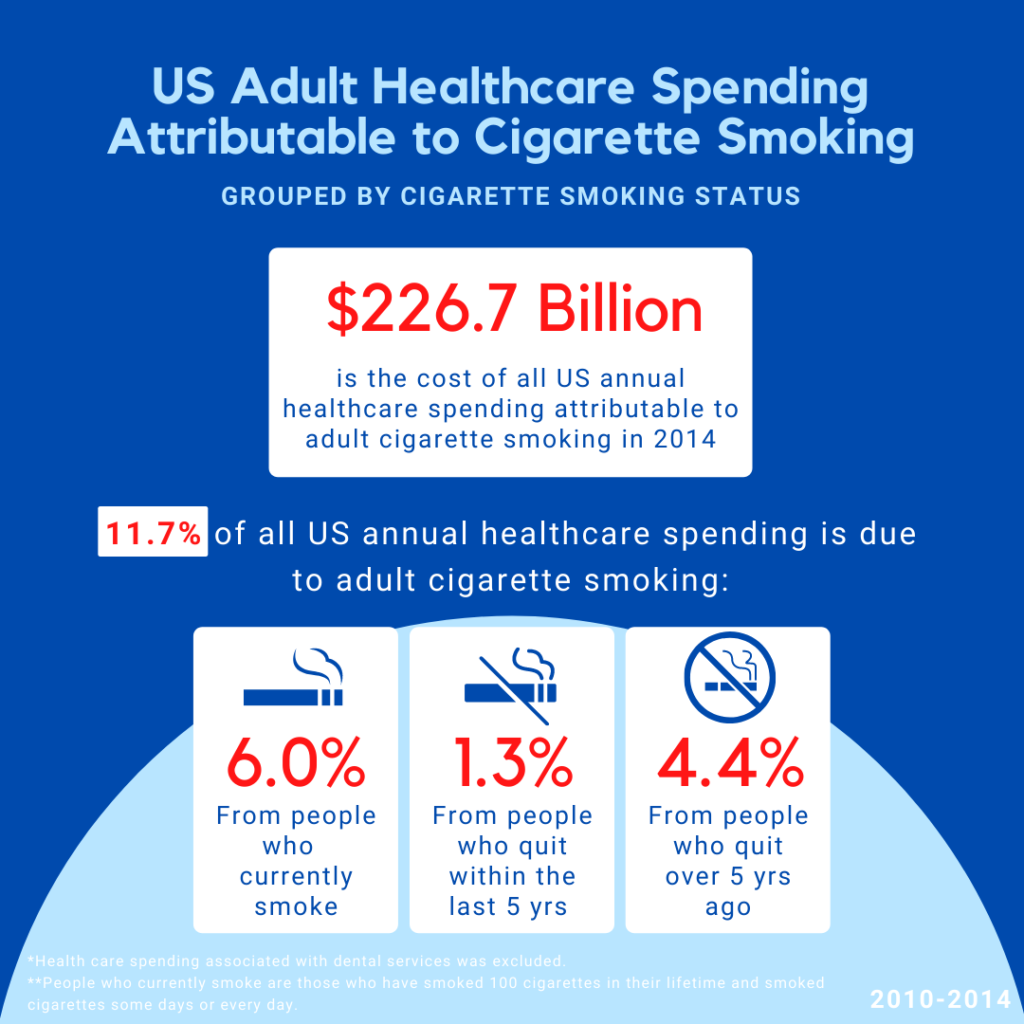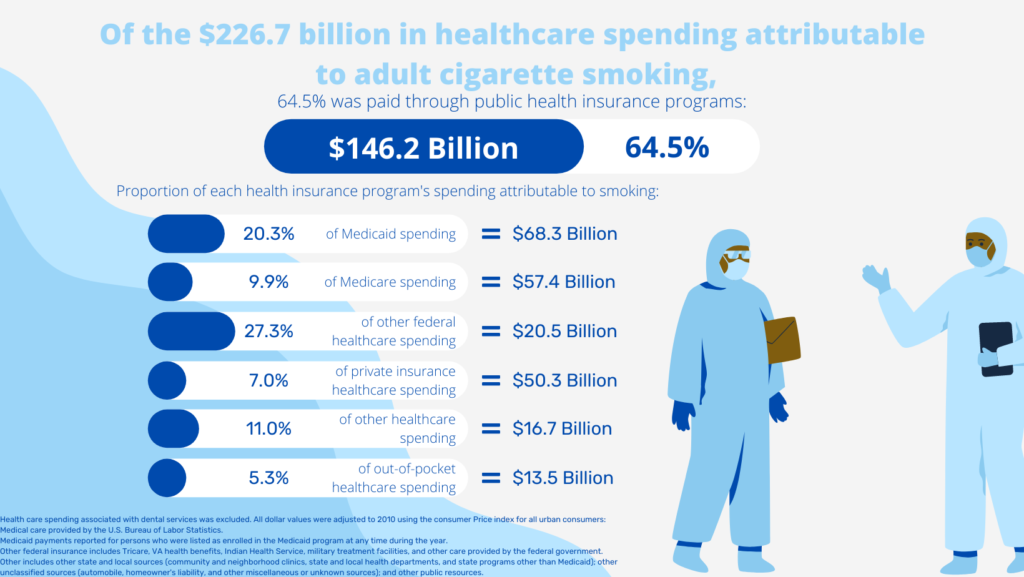Author: Gabrielle Ballweg, ASH Human Rights Policy and Communications Intern
Arguably the most compelling justification for permitting cigarette sales in the U.S. is profit. However, when a U.S. industry inflicts 226.7 billion dollars in U.S. healthcare costs annually – in addition to causing 20% of all U.S. deaths – this logic is questionable at best. In March 2021, the CDC’s Office on Smoking and Health released a study on “U.S. healthcare spending attributable to cigarette smoking in 2014,” which exposes the substantial economic burden of cigarettes in the U.S.

The goal of this study was to assess the overall smoking-attributable healthcare spending in the U.S. and to categorize this spending based on smoking status, insurance classification, and type of medical service. It compared 49,540 U.S. adults across two surveys on healthcare spending, medical care utilization, and health insurance coverage: the Medical Expenditure Panel Survey and the National Health Interview Survey. The surveys excluded healthcare spending on all other tobacco products, secondhand smoke exposure, dental care, youth tobacco use, indirect medical care costs, and infant and maternal medical services, and the results are still staggering.
Adult cigarette smoking accounts for 11.7% of all U.S. annual personal healthcare expenditures. This amounts to 226.7 billion dollars in 2014. Six percent of all healthcare expenditures are from people who currently smoke, a little over one percent are from people who recently quit smoking, and nearly four-and-a-half percent are from people who quit smoking long-term. In comparison to observations from 2000-2010, there has been a substantial increase in healthcare spending from adult cigarette smoking. This surge occurred primarily among current cigarette users, who accounted for just over three percent of all U.S. annual healthcare spending in the previous study from 2006-2010 (compared to six percent in this research period). A major contributor to this rise in spending is likely due to the effects of a higher prevalence of cigarette smoking among people who were newly insured under the Patient Protection and Affordable Care Act from 2010-2014 and their subsequent increased use of medical services.

Adult tobacco smoking also comprises a massive proportion of all healthcare spending on inpatient care, non-inpatient care, and prescription medications. The total cost of inpatient care boasts the largest proportion of smoking-related spending with 16.4% of all healthcare spending on inpatient care attributable to adult cigarette smoking followed by prescription drugs at 13.4% of total spending in this category, and non-inpatient care at six percent. In comparison to previous studies, there are substantial increases in the fractions attributable to inpatient care and prescription drugs.
The financial impact of adult cigarette smoking on U.S. healthcare is extensive, and unfortunately, it is up to the federal government (and therefore tax payers) to foot this bill. More than 50% ($125.7 billion) of smoking-attributable healthcare spending is funded by Medicare or Medicaid. When other federal healthcare programs are included, the total price that the federal government pays increases to 64.5% of all healthcare spending attributable to adult cigarette smoking. Meaning in 2014, the U.S. federal government spent an extra 146.2 billion dollars on healthcare because of cigarettes.

Furthermore, if the 30% increase in the fraction of spending on Medicaid that is attributable to adult smoking between 2010 and 2014 is any indication, the tobacco industry’s economic burden may continue to grow. For this reason, it is important that decision makers employ proven population-based interventions such as increasing tobacco taxes, implementing comprehensive some-free laws such as those in Brookline MA, Beverly Hills CA, and Manhattan Beach CA, and improving cessation access among other effective tobacco-control policies. These interventions reduce the demand for healthcare to combat smoking-related disease and death: effectively lessening the 226.7 billion dollars in annual U.S. smoking-attributable healthcare costs.
Unless otherwise specified, all data are from the following article:
Xu, X., Shrestha, S. S., Trivers, K. F., Neff, L., Armour, B. S., & King, B. A. (2021). U.S. healthcare Spending attributable to cigarette smoking in 2014. Journal of Preventive Medicine, 150, 106529. https://doi.org/10.1016/j.ypmed.2021.106529.








